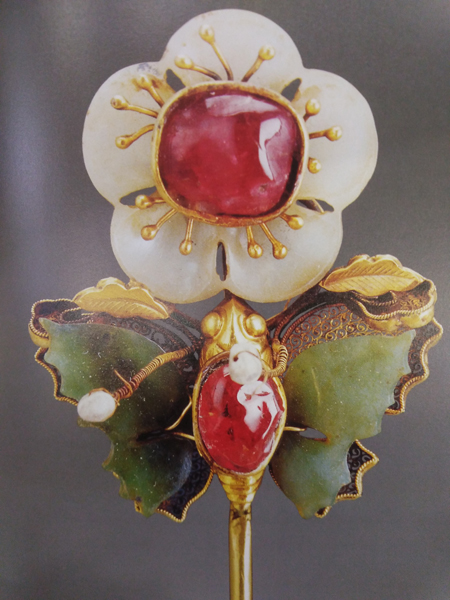 |
|
[Photo provided to China Daily] |
Despite all the aforementioned examples, pronunciation does not constitute the sole bridge between a certain animal, plant or object and an auspicious meaning that might be read into it. The image certainly counts.
Take again the spider for example, descending from its web with a silver thread attached to the rear, it reminded people of heaven-sent luck, a fact that only enhanced people's liking of it.
Both the gourd and the pomegranate were potent symbols of fertility during the Qing era. The former was chosen because of its meandering, seemingly unseverable vines, the latter because of its clusters of juicy, gem-like seeds.
Another example involves crustaceans, crabs included. In Chinese their armor is called jia. The very same word can also mean No. 1! (Think about being the wealthiest man on Earth or coming out on top of an important exam - the imperial civil service exam for example, which offers the only recognized career path for a man living in feudal China.) The claw-wielding fighter's signature sideway walk was also interpreted as a sign of valor, although in reality it might be scuttling into the hide.
And with Chinese being a pragmatic people, flexibility was often viewed as a merit, and shrimps were loved for embodying that trait. Both the crab and the shrimp found their way onto a lady's hair, as decorative hairpin motifs, and in that capacity were often rendered in jade or gold.
It is true that an emphasis had always been laid on the desires of an ordinary man for wealth and worldly happiness. However, with the literati commanding a strong presence in Chinese society and often acting as its guiding light, their sensibilities were also taken into account.